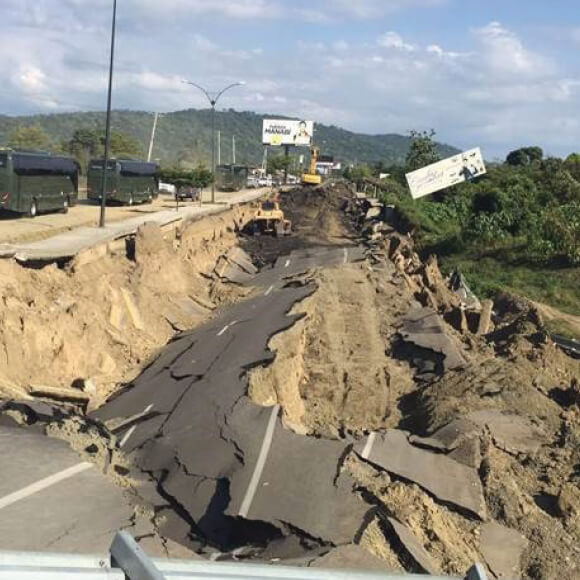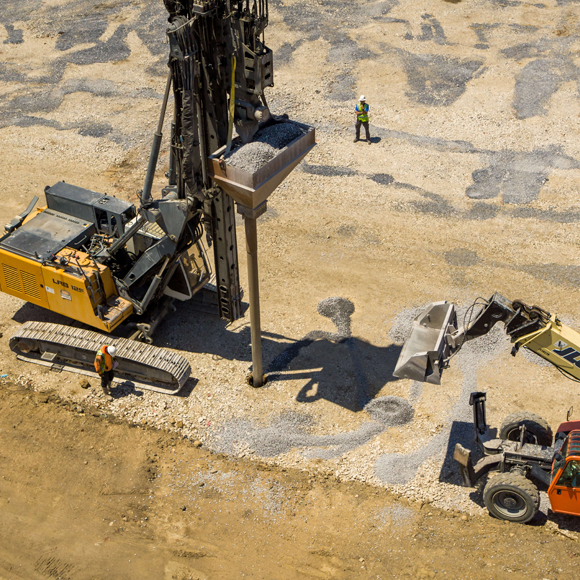
Boca de Briceño Approach Embankment
The Impact® system was effective at mitigating liquefaction and improving the global stability of a bridge approach embankment during the April 16, 2016 Earthquake in Muisne, Ecuador.
- Geotechnical Engineer: Asesoría y Estudios Técnicos CIA, Ltda
The project consisted of providing liquefaction mitigation and increasing the global stability of an 800-m long bridge embankment at the Boca de Briceño river. The approach embankment is 4 to 6 m in height, and was constructed in 2011 and 2012. The subsurface conditions at the site generally consist of interbedded layers of silty sand, sandy silt, clay and silty clay with a 1-m-thick layer of loose, liquefiable silty sand at depths of about 2 to 4 m. The groundwater table was encountered at depths of 0 to 0.6 m below ground surface.
The foundation soils at the approach embankment were reinforced with Rammed Aggregate Impact® Piers. The Impact® piers were installed under the entire footprint of the approach embankment to provide liquefaction mitigation and increased global stability. More than 6,000 Impact® pier elements were installed at spacings of 1.65 to 2.75 m on-center.
On April 16th, 2016 a 7.8 magnitude earthquake occurred in Muisne (about 112 km from the project site). Ground motions between 0.37 to 0.52g were recorded adjacent to the project site. The Mejia bridge embankment, constructed over a similar soil profile and located about 50 km from the Briceño bridge, experienced a catastrophic failure. However, the Briceño bridge experienced only negligible settlements and surficial cracks in the asphalt roadway that were not substantial enough to disrupt the traffic flow. Sand boils were observed adjacent to the Briceño bridge site, which indicates that the unreinforced soils did experience liquefaction during the earthquake event.
Research is ongoing to better quantify the improvement benefits of Rammed Aggregate Pier® elements at the project site. However, if you download the case study with the button below, you will see in Figure 4, that the installation of the Rammed Aggregate Piers increased the cyclic resistance ratio (CRR) in the critical liquefiable layer, and thus decreased the cyclic strain from 4.5% to 3% beneath the bridge embankment. The Rammed Aggregate Piers provided a stiffened crust that reduced liquefaction settlements beneath the embankment and improved the loose silty sand layer, which likely contributed to the overall global stability of the embankment.


